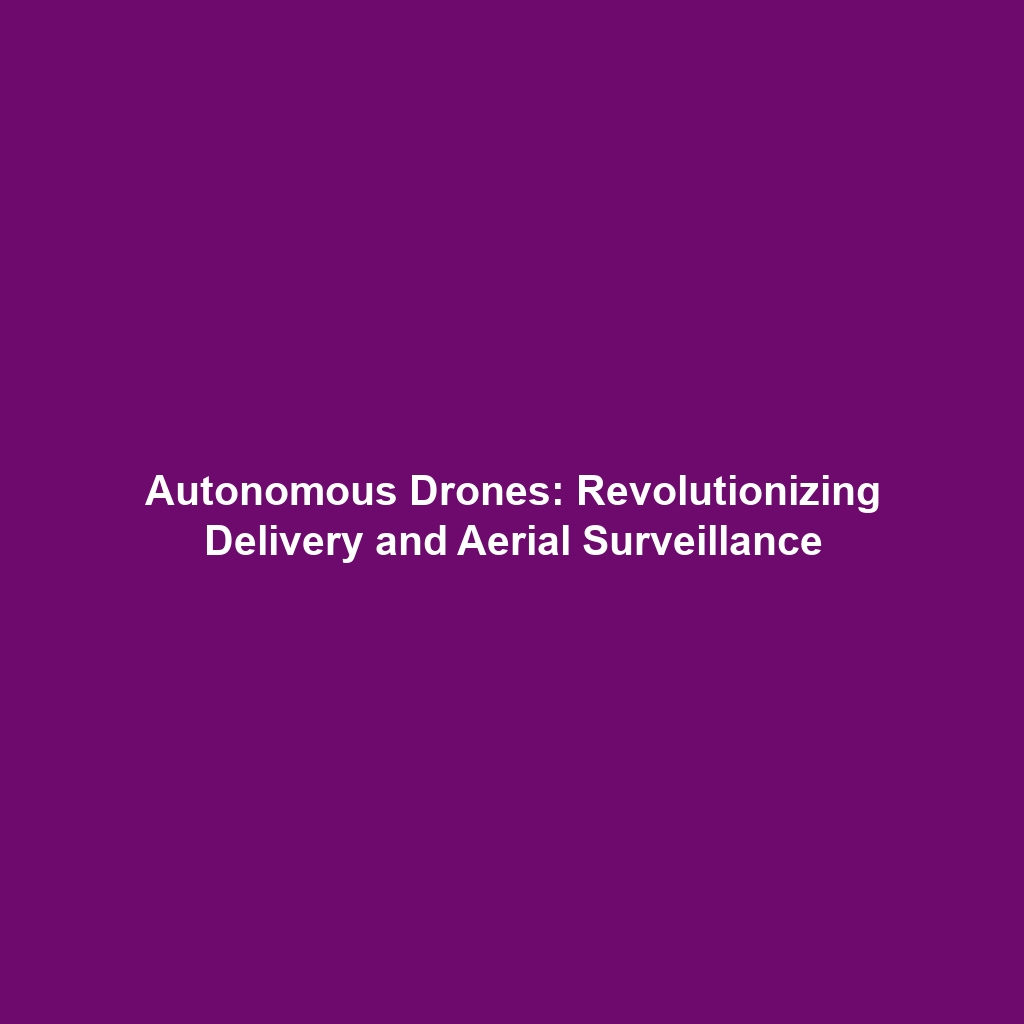Autonomous Drones: From Delivery to Aerial Surveillance
Introduction
As technology progresses rapidly, autonomous drones have emerged as significant players within the scope of autonomous robots. These versatile flying machines are revolutionizing industries ranging from logistics to security and surveillance. The importance of autonomous drones lies in their ability to operate with minimal human intervention, enhancing efficiency and safety in various applications. This article delves into how autonomous drones function, their applications in delivery and surveillance, and the exciting future that lies ahead in the realm of autonomous robotics.
Key Concepts
Understanding Autonomous Drones
Autonomous drones are designed to perform tasks automatically using pre-programmed instructions and environmental data. They are a category of autonomous robots that leverage technologies such as:
- Artificial Intelligence (AI): Drones utilize AI for decision-making and obstacle avoidance.
- GPS Navigation: Essential for precise operational capabilities in both rural and urban settings.
- Vision Technology: Drones equipped with cameras can interpret their surroundings.
These components allow drones to excel in operations where human oversight may be impractical or unsafe.
Applications and Real-World Uses
The applications of autonomous drones are vast and varied, showcasing their relevance as autonomous robots:
- Delivery Services: Companies like Amazon are experimenting with drone delivery systems to transport packages efficiently.
- Aerial Surveillance: Law enforcement and security agencies employ drones for monitoring large areas and gathering aerial data.
- Agricultural Monitoring: Farmers utilize drones to assess crop health and manage resources effectively.
These practical examples highlight how autonomous drones are transforming industries by offering innovative solutions and enhancing operational efficiency.
Current Challenges
Despite their numerous advantages, the deployment of autonomous drones faces several challenges, including:
- Regulatory Hurdles: Compliance with aviation regulations can complicate the use of drones in populated areas.
- Privacy Concerns: The ability of drones to capture images raises important privacy issues.
- Technical Limitations: Issues such as battery life and signal loss affect operational efficiency and reliability.
Addressing these challenges is crucial for the widespread adoption of autonomous drone technology.
Future Research and Innovations
Research in the field of autonomous drones is rapidly advancing, promising a future filled with innovations. Some anticipated developments include:
- Swarm Technology: Coordination among multiple drones for complex tasks.
- Enhanced AI Algorithms: Improving the decision-making processes of drones to navigate unpredictable environments.
- Longer-Lasting Batteries: Innovations aimed at prolonging flight time and operational range.
These advancements will enhance the capabilities of autonomous drones, solidifying their role in the future of autonomous robots.
Conclusion
In conclusion, autonomous drones represent a paradigm shift within the landscape of autonomous robots. Their application in sectors such as delivery and aerial surveillance demonstrates their potential for enhancing efficiency and safety. As we navigate the challenges and opportunities ahead, the path toward the next generation of autonomous drones holds significant promise. For further reading, explore our articles on AI in Robotics and Future Technological Advances to understand the broader implications of these advancements.

Leave a Reply